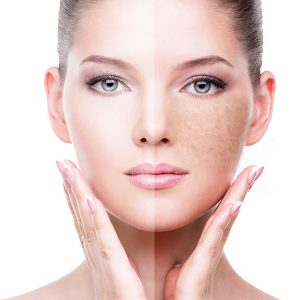
Facial pigmentation, often referred to as hyperpigmentation, is a common concern that affects individuals of all skin types and ages. This condition occurs when certain areas of the skin become darker than the surrounding skin due to an overproduction of melanin, the pigment responsible for skin, hair, and eye color. While facial pigmentation is usually harmless, it can significantly impact one’s self-esteem and confidence. South Delhi Cosmetic Clinic, a renowned hub for advanced skincare and cosmetic treatments, offers expert insights on understanding and managing facial pigmentation.
Causes of Facial Pigmentation
Facial pigmentation can stem from a variety of factors, both intrinsic and extrinsic. These factors can include:
Sun Exposure: Prolonged exposure to ultraviolet (UV) rays from the sun can stimulate melanin production, leading to sunspots or freckles.
Hormonal Changes: Hormonal fluctuations, such as those occurring during pregnancy (melasma) or while taking birth control pills, can trigger hyperpigmentation.
Post-Inflammatory Hyperpigmentation: Skin inflammation caused by acne, eczema, or other skin conditions can result in dark spots after the inflammation subsides.
Aging: As we age, the skin’s natural ability to regenerate and repair itself diminishes, leading to an accumulation of pigment in certain areas.
Genetics: Some individuals are genetically predisposed to developing certain types of pigmentation, such as freckles or birthmarks.
Skin Type: People with darker skin tones are more susceptible to certain forms of pigmentation, including melasma and post-inflammatory hyperpigmentation.
Types of Facial Pigmentation
South Delhi Cosmetic Clinic experts highlight several common types of facial pigmentation:
Melasma: Often called “the mask of pregnancy,” melasma appears as brown or gray-brown patches on the face, particularly on the cheeks, forehead, and upper lip. Hormonal fluctuations and sun exposure are primary triggers.
Sunspots: Also known as age spots or liver spots, sunspots are flat, tan, or brown spots caused by long-term sun exposure.
Freckles: Freckles are small, concentrated areas of increased melanin production, commonly seen in fair-skinned individuals. They are often hereditary and exacerbated by sun exposure.
Post-Inflammatory Hyperpigmentation: This occurs after skin trauma, such as acne or wounds, and results in dark spots that fade slowly over time.
Lentigines: These are small, dark spots that often appear on sun-exposed areas as a result of UV exposure.
Prevention and Management
The experts at South Delhi Cosmetic Clinic recommend a holistic approach to prevent and manage facial pigmentation:
Sun Protection: The most effective way to prevent facial pigmentation is to protect your skin from UV radiation. Use a broad-spectrum sunscreen with at least SPF 30 daily, wear protective clothing, and seek shade during peak sun hours.
Topical Treatments: Several over-the-counter and prescription creams containing ingredients like hydroquinone, retinoids, vitamin C, and glycolic acid can help lighten and manage pigmentation. However, it’s crucial to consult a dermatologist before using any products.
Chemical Peels: Chemical peels involve applying a solution to the skin to exfoliate the top layer, revealing fresher skin beneath. They can be effective in reducing the appearance of pigmentation and promoting even skin tone.
Laser Treatments: Laser therapies, such as intense pulsed light (IPL) and fractional lasers, target pigmented areas and stimulate collagen production. These treatments can provide noticeable results, but multiple sessions may be required.
Microneedling: This minimally invasive procedure involves creating tiny micro-injuries in the skin to stimulate collagen production and improve pigmentation irregularities.
Professional Guidance: It’s essential to seek guidance from a board-certified dermatologist or skincare professional before undergoing any treatments. They can tailor a treatment plan based on your skin type, concerns, and medical history.
Home Remedies for Pigmentation
In addition to professional treatments, there are several home remedies that may help manage mild pigmentation issues:
Lemon Juice: The natural citric acid in lemon juice can act as a gentle bleaching agent. However, it’s important to use caution as lemon juice can also be irritating to the skin.
Aloe Vera: Aloe vera’s soothing properties can help reduce inflammation and promote skin healing, which may aid in fading pigmentation.
Turmeric: This natural ingredient has been used for centuries for its anti-inflammatory and antioxidant properties. A paste made from turmeric and milk can be applied to pigmented areas.
Vitamin E: Applying vitamin E oil or creams containing vitamin E can help moisturize the skin and promote healing.
Conclusion
Facial pigmentation is a common concern that affects individuals worldwide. While various factors contribute to its development, understanding its causes and types is essential for effective prevention and management. From diligent sun protection to professional treatments, individuals have an array of options to address facial pigmentation. South Delhi Cosmetic Clinic’s expert insights provide valuable guidance for those seeking a clearer, more even complexion. Remember, individual results may vary, so consulting with a dermatologist is crucial to tailor a treatment plan suited to your specific needs and skin type. With the right approach, achieving a radiant, pigmentation-free complexion is indeed possible.


